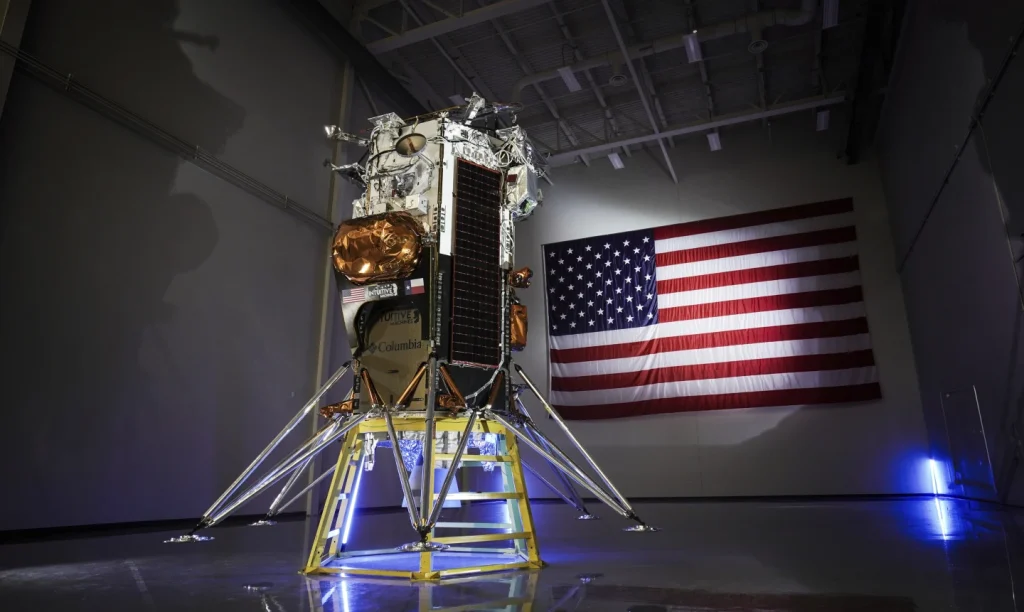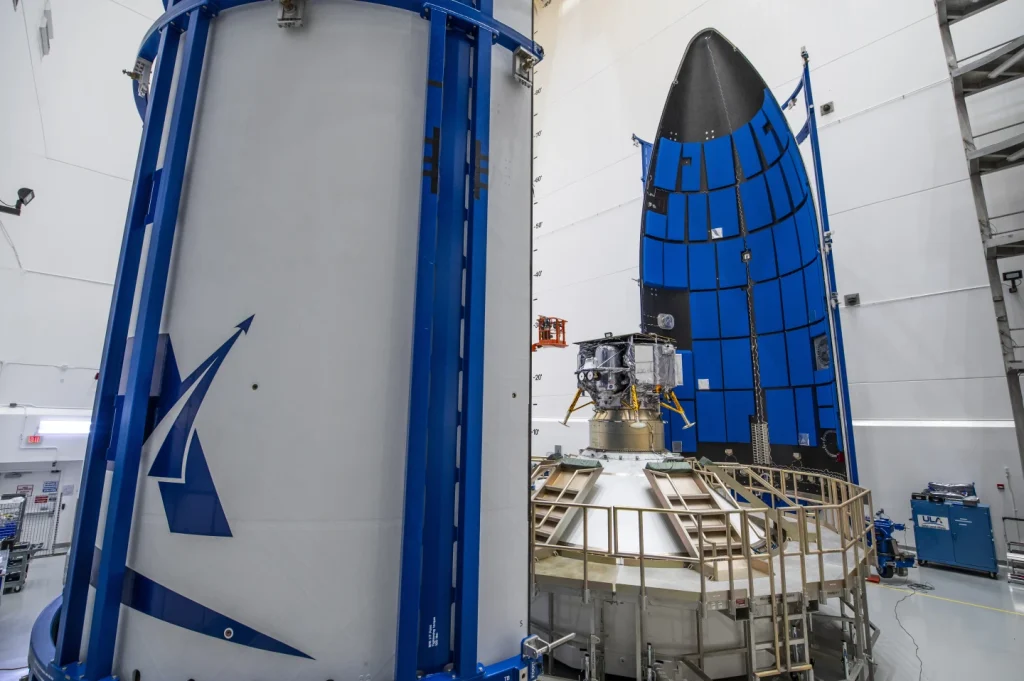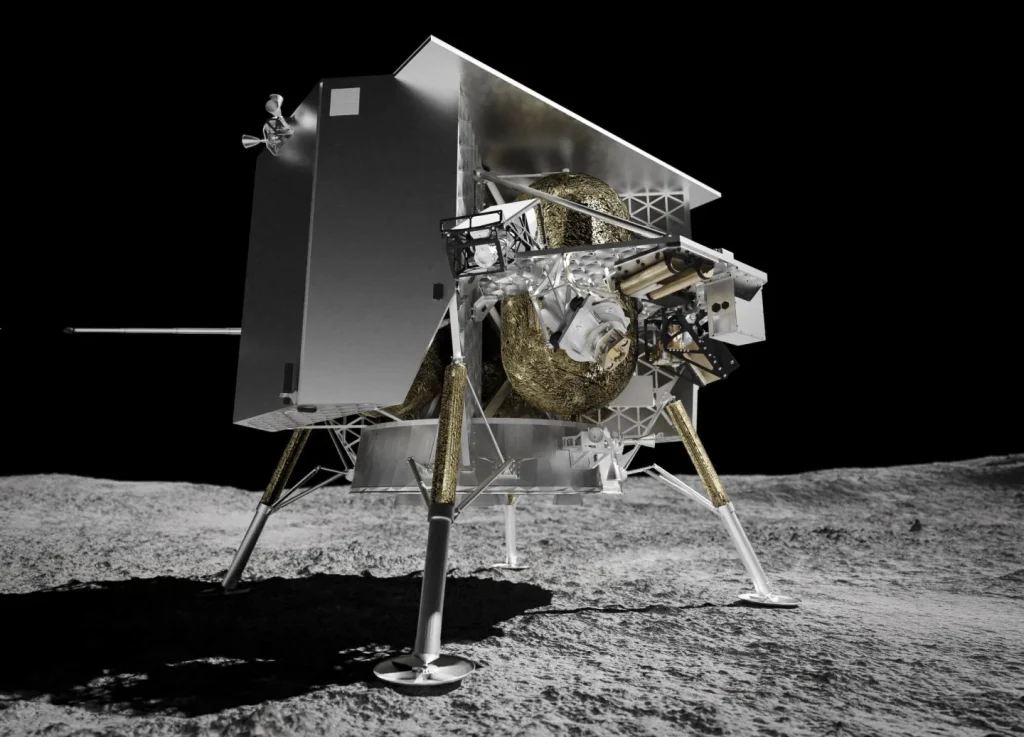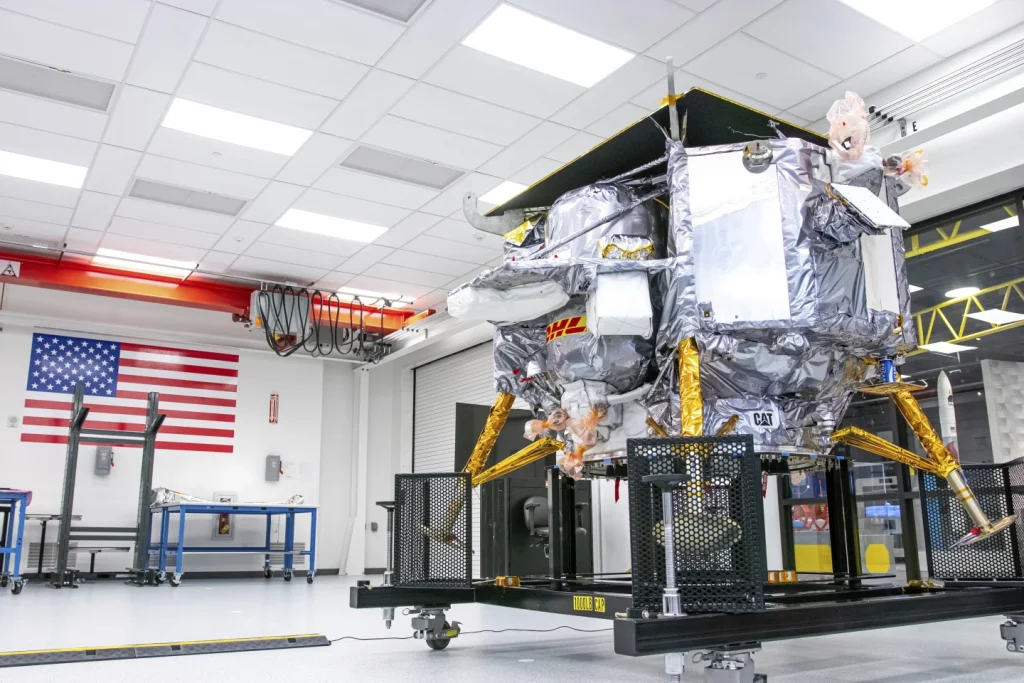In recent years, the race to explore and conquer the moon has regained momentum, with China and India successfully achieving moon landings, while Russia, Japan, and Israel faced setbacks in their lunar missions.
Amidst this resurgence, two private companies are striving to rekindle American lunar exploration, marking a significant milestone more than five decades after the conclusion of the Apollo program.
This essay will delve into the evolving landscape of lunar exploration, highlighting the endeavors of private enterprises and nations, and the implications of these efforts on the future of space exploration.
The resurgence of lunar exploration is underpinned by a NASA-supported initiative aimed at fostering commercial moon deliveries, as the space agency directs its focus towards reinstating human presence on the moon.
This initiative has sparked a race among private companies to achieve lunar landings, marking a pivotal shift in the dynamics of space exploration.
NASA Administrator Bill Nelson aptly describes these private entities as “scouts going to the moon ahead of us,” signifying the collaborative efforts between public and private sectors to propel the next phase of lunar exploration.
Pittsburgh’s Astrobotic Technology stands at the forefront of this new era, poised to launch a lander on a groundbreaking mission aboard United Launch Alliance’s Vulcan rocket.
Simultaneously, Houston’s Intuitive Machines is gearing up for its own lunar mission, aiming to launch a lander in mid-February with the assistance of SpaceX.
These private enterprises represent the vanguard of commercial lunar exploration, leveraging innovative technologies and strategic partnerships to advance the frontiers of space exploration.
While private companies vie for lunar dominance, Japan has emerged as a formidable contender in the global space race.
The Japanese Space Agency is set to attempt a lunar landing in the coming weeks, showcasing its prowess in space exploration.
With a head start gained through a September launch, Japan’s mission encompasses the deployment of a lander equipped with toy-size rovers, alongside an X-ray telescope that remains in orbit around Earth.
If successful, Japan will join the ranks of nations that have achieved lunar landings, underscoring its commitment to pushing the boundaries of space exploration.
The landscape of lunar exploration is characterized by a diverse array of achievements and ambitions. Notably, Russia and the United States have historically accomplished lunar landings during the 1960s and 70s, laying the groundwork for subsequent lunar missions.
China has emerged as a prominent player in recent years, achieving multiple lunar landings, including a historic touchdown on the moon’s far side.
Furthermore, India’s successful lunar landing last summer has reinforced the global interest in lunar exploration.
However, it is essential to acknowledge that the United States remains the sole nation to have deployed astronauts on the lunar surface, signifying its unparalleled legacy in space exploration.
The endeavor to achieve lunar landings is fraught with formidable challenges, accentuating the complexities inherent in space exploration.
Landing on the moon necessitates navigating the absence of a substantial atmosphere to decelerate spacecraft, rendering traditional methods such as parachutes ineffective.
Instead, landers must rely on thrusters to facilitate a controlled descent, all the while maneuvering past hazardous terrain marked by cliffs and craters.
This underscores the technical prowess and ingenuity required to execute successful lunar landings, underscoring the formidable nature of this endeavor.
The resurgence of lunar exploration, driven by the convergence of public and private initiatives, holds profound implications for the future of space exploration.
The collaborative efforts between NASA and private companies exemplify a paradigm shift in the approach to lunar missions, ushering in an era characterized by innovation, efficiency, and collaboration.
Furthermore, the global competition in lunar exploration underscores the expanding horizons of space exploration, with nations and private enterprises vying to leave an indelible mark on the lunar landscape.
In conclusion, the resurgence of lunar exploration has galvanized a new wave of endeavors, as private companies and nations compete to establish their presence on the moon.
The convergence of public and private initiatives, coupled with the ambitious missions undertaken by nations such as Japan, underscores the dynamic nature of space exploration.
As the quest for lunar dominance unfolds, the implications of these endeavors extend far beyond the celestial realm, shaping the future trajectory of space exploration and humanity’s enduring quest to unravel the mysteries of the cosmos.

In recent years, the moon has once again become a focal point of space exploration, with various countries and private companies vying to make their mark on its surface.
The resurgence of interest in lunar exploration has reignited the space race, this time with a new set of players.
This essay will delve into the recent developments in lunar exploration, particularly focusing on the efforts of private companies such as ispace, Astrobotic, and Intuitive Machines, as they seek to achieve the historic feat of landing on the moon.
The moon, once the pinnacle of human achievement during the Apollo era, had taken a backseat in space exploration as attention shifted to Mars and beyond.
However, recent events have brought the moon back into the spotlight. Last April, ispace, a Japanese company, witnessed its lander crash into the lunar surface, followed by Russia’s unsuccessful landing in August.
India, on the other hand, achieved success with its landing near the moon’s south polar region, marking its second attempt after a failed mission in 2019.
Additionally, an Israeli nonprofit also made an attempt to land on the moon in 2019, signaling a renewed global interest in lunar exploration.
The United States, a pioneer in lunar exploration with the historic Apollo missions, has not attempted a moon landing since Apollo 17 in 1972. Instead, its focus shifted towards Mars, leaving the moon behind in NASA’s rearview mirror.
However, the landscape has now evolved, with private companies like Astrobotic and Intuitive Machines stepping up to end America’s moon-landing drought.
These companies are not only aiming to achieve a successful landing but are also competing to become the first private entity to accomplish this monumental feat.
Astrobotic and Intuitive Machines have emerged as key players in the new space race, with both companies receiving substantial funding from NASA to develop lunar delivery services.
With nearly $80 million in funding each, these companies are leading the charge to return to the moon. Astrobotic’s Peregrine lander, named after the fastest bird, is set to carry 20 research packages to the moon for seven countries, including NASA.
On the other hand, Intuitive Machines’ Nova-C lander will target the moon’s south polar region, carrying five experiments for NASA.
The competition between these companies is not just about achieving a successful landing; it is also a geopolitical race, as highlighted by Steve Altemus, the CEO of Intuitive Machines.
The global implications of lunar exploration, particularly in the context of China’s ambitions in space, have added an extra layer of significance to this race.
The desire to be the first to land on the moon reflects not only a technological milestone but also a strategic advantage in the broader context of space exploration and international relations.
The road to the moon is fraught with challenges, as evidenced by the rocket delays that have already affected both missions.

The unpredictable nature of space exploration adds an element of uncertainty to the race, making it a “wild, wild ride,” as described by John Thornton, the CEO of Astrobotic.
The pursuit of lunar exploration is not without risks, but it is precisely this spirit of adventure and daring that drives these companies forward.
The resurgence of interest in lunar exploration, coupled with the involvement of private companies, has reinvigorated the space race and opened up new frontiers in space exploration.
The competition between Astrobotic and Intuitive Machines represents a new chapter in the history of lunar exploration, with the potential to reshape our understanding of the moon and its significance in the context of human exploration beyond Earth.
As these companies race towards the moon, they carry with them the hopes and aspirations of a new era of space exploration, one that is defined not only by national ambitions but also by the pioneering spirit of human endeavor.
In conclusion, the race to the moon is a testament to the enduring human quest for exploration and discovery, and it holds the promise of unlocking new possibilities for the future of space exploration.
As the world watches with bated breath, the outcome of this race will undoubtedly shape the trajectory of lunar exploration for years to come.
The exploration of the moon has long been a dream of scientists and space enthusiasts alike. With the advancements in technology and the ambitious goals set by organizations like NASA, the possibility of human colonization on the moon is becoming more of a reality.
One of the key components of this potential colonization is the discovery of frozen water in the moon’s south pole.
Scientists believe that the south pole’s permanently shadowed craters hold billions of pounds (kilograms) of frozen water, which could be utilized for drinking and making rocket fuel.
This discovery has sparked a new wave of interest in lunar exploration, with NASA’s Artemis program leading the charge.
Named after Apollo’s twin sister in Greek mythology, the Artemis program aims to land the first moonwalkers in the south pole region.
While NASA has 2025 scheduled for the launch of the Artemis program, the General Accountability Office suspects that it will be closer to 2027.
Despite the delay, the mission is still on track to explore the south pole and uncover the potential resources hidden within its craters.
In addition to NASA’s efforts, private companies like Astrobotic and Intuitive Machines are also joining the race to the moon’s south pole.
Astrobotic will be heading to the region on its second flight, carrying NASA’s water-seeking Viper rover. Meanwhile, Intuitive Machines will return on its second mission, delivering an ice drill for NASA.
These collaborative efforts between government agencies and private companies highlight the significance of the south pole’s exploration and the potential benefits it could bring.
However, landing near the moon’s south pole is no easy feat. The terrain is rocky, craggy, and full of craters, making it difficult to find a lighted region to touch down safely.
This presents a significant challenge for the Artemis program and the accompanying missions. The precision required to land in the right spot is crucial and will test the capabilities of the spacecraft and its operators.
The significance of the south pole’s exploration extends beyond scientific discovery. It also serves as a symbol of progress and collaboration.
While Houston has long been associated with space exploration, Pittsburgh is a newcomer to the scene. To commemorate the Steel City, Astrobotic’s lander will carry a token from the Kennywood amusement park, the winner of a public vote that beat out other iconic symbols like the Steelers’ Terrible Towel and dirt from Moon Township’s Moon Park.
This gesture highlights the unity and excitement surrounding the moon’s exploration, bringing together different communities and celebrating the achievements of human ingenuity.
In conclusion, the exploration of the moon’s south pole represents a significant milestone in humanity’s quest for space exploration and potential colonization.
The discovery of frozen water and the efforts to land spacecraft in this challenging terrain demonstrate the determination and innovation of scientists and engineers.
The collaborative efforts between government agencies and private companies further emphasize the importance of this mission and the potential benefits it could bring.
As we look towards the future, the exploration of the moon’s south pole will undoubtedly pave the way for further advancements in space exploration and the utilization of extraterrestrial resources.
The inclusion of the ashes or DNA from 70 individuals, including iconic figures such as Gene Roddenberry and Arthur C.
Clarke, on the lander represents a unique and unprecedented gesture in space exploration. The decision to honor these individuals by sending their remains into space demonstrates a deep appreciation for their contributions to science, literature, and popular culture.

Furthermore, the decision to include the representation of an additional 265 individuals on the rocket’s upper stage, which will orbit the sun once separated from the lander, adds another layer of significance to this mission.
The inclusion of original “Star Trek” cast members and strands of hair from three U.S. presidents, including George Washington, Dwight D. Eisenhower, and John F. Kennedy, serves as a powerful tribute to these historical and cultural figures.
This mission not only represents a significant technological achievement but also serves as a poignant reminder of the impact that these individuals have had on our society.
